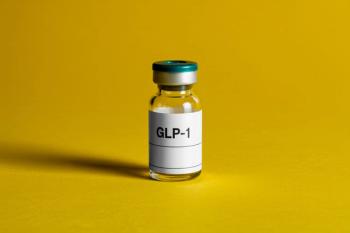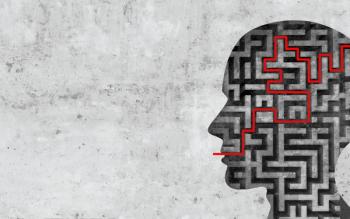
- Psychiatric Times Vol 20 No 4
- Volume 20
- Issue 4
Intergenerational Transmission of Trauma: An Introduction for the Clinician
Parents who have witnessed traumatic events may pass dysfunctional life views on to their children. How much more vulnerable are these second-generation victims to PTSD and other psychiatric disorders?
Students of human nature have long grappled with questions about the replication of parents' traits into their offspring. Nonmedical writings have alluded to the fact that "sins" may be transmitted from parents to children. However, the first extensive elaboration on the impact of parents' neuroses on their children came in the late 1800s from the emerging field of psychoanalysis. All subsequent schools of psychology examining trauma have been concerned with the handing down of neurotic traits. It was only in the post-Holocaust era that a consistent literature on the intergenerational effects of parents' traumas emerged. Soon after the description of the Holocaust syndrome by Niederland (1961), Rakoff et al. (1966) reported on the transmission of the effects of the Holocaust trauma to the "second generation." Since then, several hundred articles on intergenerational transmission--mainly limited to clinical cases and anecdotal reports--have been published, raising criticisms about the initial lack of systematic empirical studies. This initial paucity of systematic research was partly due to a lack of consensus about what was being transmitted. There were early hints of a certain complex of symptoms or even specific psychopathology in children of Holocaust survivors (Barocas and Barocas, 1973).
Meanwhile, pointing to the heterogeneity of this group, Danieli (1981) identified four subtypes of families of Holocaust survivors: victim families, numb families, fighter families and families of "those who made it." In a seminal study, Solomon et al. (1988) examined Israeli soldiers who developed posttraumatic stress disorder during the Lebanese war and found that soldiers who were offspring of Holocaust survivors had a more protracted course of PTSD. Thus, the existence of a factor of vulnerability carried by healthy children of survivors was raised. Nader (1998) reported similar findings in children whose parents experienced significant traumata in life. Such children were more likely to present symptoms of PTSD after witnessing a violent incident.
Drawing on findings that repeated trauma exposure may alter the responsiveness of the hypothalamus-pituitary-adrenocortical axis even before the onset of PTSD, Yehuda et al. (1998) found that healthy offspring of Holocaust survivors are more likely to develop PTSD after traumatic events and report a larger number of symptoms. Similarly, Novac and Huber-Schneider (1998) reported increased comorbidity in previously healthy children of survivors who were seen in a psychiatric clinic for anxiety and depressive disorders. The authors hypothesized on the different mechanisms of transmission of trauma.
Other studies have further confirmed that offspring of Holocaust survivors are more vulnerable to psychological distress after developing breast cancer (Baider et al., 2000) and that healthy children of war veterans may show abnormalities in the Stroop Color Test (Motta et al., 1997). Danieli (1998) also covered a large number of studies in detail, including animal models for transmission.
The importance of this subject has also been recognized by the International Society of Traumatic Stress Studies (ISTSS), with the founding and maintaining of a Special Interest Area Group on Intergenerational Transmission of Trauma and Resiliency. At the annual ISTSS meetings, there are an increasing number of presentations on intergenerational transmission. There are also progressively more reports of psychopathology in the "third generation" (i.e., grandchildren) of Holocaust survivors.
In clinical practice, patients with parents suffering with PTSD often describe damaged, preoccupied parents who are emotionally limited. Symptoms in parents such as traumatic reliving, emotional numbing and dissociative phenomena do not help a child develop a reasonable sense of safety and predictability in the world. These parents are also less able to respond optimally during usual developmental crises and help the world to be more comprehensible to the child. The parent suffering with PTSD also has difficulty modeling a healthy sense of identity and autonomy, appropriate self-soothing mechanisms and affect regulation, and maintaining a balanced perspective when life challenges arise. Instead, they can model catastrophic or inappropriately numbed and disassociated responses. Therefore, the parent's high levels of anxiety can significantly interfere with the child's developmental progress.
Children's self-image and object relations are also obviously affected by their image of their parents. Parents' success in coping and being resilient determines whether the child can be proud, ashamed or confused about their parents.
Case Vignettes
Case 1. A woman in her late 30s was referred for treatment of obsessive-compulsive disorder, depression, past substance abuse and general chaos. Her most striking symptoms were extreme anxiety, apprehension and confusion in the face of interpersonal tasks that seemed within the scope of someone so intelligent and articulate. She had not responded to therapy with several different psychiatrists in the past. In the initial history-taking, it emerged that she had been raped in her late teens but denied that it produced any lasting effects. After several months of therapy, she revealed that--before she was born--her mother and maternal grandfather had witnessed the murder of her grandmother. The mother and grandfather had both been chronically depressed, anxious, fearful and preoccupied with reliving experiences since the murder. It became clear that the patient's OCD was partially an attempt to create some sense of predictability and safety. Significant improvement in functioning was achieved through a combination of antidepressants, lamotrigine (Lamictal), some family therapy, and individual therapy and psychoeducation regarding traumatic effects in each generation.
Case 2. A male professional in his late 20s presented for treatment of bulimia, depression and several anxiety disorders. In initial history-taking, he denied a history of trauma. As therapy progressed, he mentioned that his paternal grandparents were Holocaust survivors who were very involved in his upbringing. They were loving and overprotective but also very anxious and highly critical. Therapy clarified that the criticism was in the service of trying to make everything perfect to avoid some new, unspecified catastrophe. The patient's bulimia was an attempt to have a perfect body and, therefore, avoid bad things. When seen in family therapy, the patient's father clearly had second-generation problems and accepted a referral for therapy. The father's treatment greatly aided the patient, as his father could now model for him how to navigate through life's shoals in a calm, reasonable manner. Individual therapy, antidepressant treatment and the father's improvement resulted in almost complete recovery.
Further Directions
Intergenerational transmission of trauma seems to have a particular significance in offspring of parents with a history of major trauma and subsequent PTSD. The phenomenon is not just limited to Holocaust survivors. Children of parents who suffer from PTSD are most likely to develop a specific lifetime vulnerability to traumatic stress and are possibly more likely to develop comorbidity.
Future studies will have to shed more light on the different types of transmission. For instance, it is not known whether the transmission of trauma in Holocaust families is similar to the cycle of violence seen in families with other types of trauma. Similarly, the relationship between such factors of vulnerability and the social resiliency seen in some offspring of trauma survivors has to be further explored. In addition, there needs to be more research and better understanding of the genetic traits that make certain traumatized individuals most likely to develop PTSD. This would lead to better theories about what has been potentially genetically transmitted to the second (and third) generation that might influence their response, among other things, to their parent's psychopathology.
Articles in this issue
over 22 years ago
Global and Social Considerationsover 22 years ago
Security Alerts Trouble American Psycheover 22 years ago
Psychiatry's Hottest Niche Marketsover 22 years ago
First Night On-Call, Coronary Care Unitover 22 years ago
The Last Frontier: Going Beyond the Limitsover 22 years ago
Secondary Traumatization in Mental Health Care Providersover 22 years ago
Changes in the Concept of PTSD and Traumaover 22 years ago
The DSM: Not Perfect, but Better Than the Alternativeover 22 years ago
Dump the DSM>!Newsletter
Receive trusted psychiatric news, expert analysis, and clinical insights — subscribe today to support your practice and your patients.














